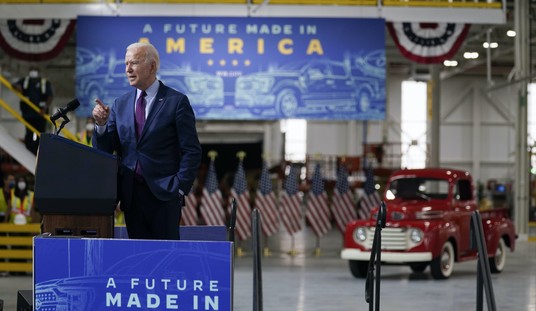If the Obama administration hoped to keep up the narrative of a healing economy as the midterm general election campaigns heat up, they will be bitterly disappointed with the August jobs report. The US economy added only 142,000 jobs in August, far below expectations after yesterday’s ADP report, and the workforce numbers continue to lag:
Total nonfarm payroll employment increased by 142,000 in August, and the unemployment rate was little changed at 6.1 percent, the U.S. Bureau of Labor Statistics reported today. Job gains occurred in professional and business services and in health care.
In August, both the unemployment rate (6.1 percent) and the number of unemployed persons (9.6 million) changed little. Over the year, the unemployment rate and the number of unemployed persons were down by 1.1 percentage points and 1.7 million, respectively. (See table A-1.)
Among the major worker groups, the unemployment rates in August showed little or no change for adult men (5.7 percent), adult women (5.7 percent), teenagers (19.6 percent), whites (5.3 percent), blacks (11.4 percent), and Hispanics (7.5 percent). The jobless rate for Asians was 4.5 percent (not seasonally adjusted), little changed from a year earlier. (See tables A-1, A-2, and A-3.)
The number of long-term unemployed (those jobless for 27 weeks or more) declined by 192,000 to 3.0 million in August. These individuals accounted for 31.2 percent of the unemployed. Over the past 12 months, the number of long-term unemployed has declined by 1.3 million. (See table A-12.)
The civilian labor force participation rate, at 62.8 percent, changed little in August and has been essentially unchanged since April. In August, the employment-population ratio was 59.0 percent for the third consecutive month but is up by 0.4 percentage point from a year earlier. (See table A-1.)
The combined job growth in June and July was revised downward by 28,000 jobs as well, still leaving both above the 200K level. This result falls slightly below the rate needed to keep up with population growth, in effect making it a step backward. That comes as a surprise, given the rosy predictions of economic growth this year even after the disastrous Q1 GDP report.
That wasn’t the only bad news, either. The number of people not in the labor force rose by 268,000, almost twice as many as the new jobs created in the same period. In the population survey, the number of people employed in non-agricultural industries fell, both overall (-168,000) and part-time (-197,000). Both the U-3 and U-6 measures fell slightly, but the civilian workforce participation rate fell slightly as well to 62.8%, and the employment-population ratio stayed the same as it has for the last three months at 59%.
Reuters didn’t sugar-coat the results, noting that this was the smallest job-creation figure in eight months:
U.S. job growth slowed down sharply in August and more Americans gave up the hunt for work, giving a cautious Federal Reserve more reasons to wait a bit longer before raising interest rates.
Nonfarm payrolls increased 142,000 last month, the smallest increase in eight months, the Labor Department said on Friday. The unemployment rate fell one-tenth of a percentage point to 6.1 percent as people dropped out of the labor force.
June and July data were revised to show 28,000 fewer jobs created than previously reported, lending the weaker tone. In addition, manufacturing saw no job growth and retail payrolls declined for the first time since February.
Economists had expected payrolls to increase 225,000 in August and the unemployment rate to fall to 6.1 percent.
CNBC notes that full-time positions only grew by 127,000:
Full-time positions grew by 127,000, while part-time plunged by 327,000.
Taken as a whole the numbers are in keeping with a modest pace of economic growth likely to keep the Federal Reserve loose in how it approaches monetary policy. The U.S. central bank is nearly finished with the third round of its monthly bond buying program, but has pledged to keep short-term interest rates near zero until the jobs picture improves and inflation accelerates. …
“The report is a remarkable disappointment as a headline number, especially after receiving such promising macro data over the summer,” said Todd M. Schoenberger, president of J. Streicher Asset Management. “Oddly enough, though, this flat figure may still bode well for investor’s portfolios because it should force the Fed to take a breather with its ‘increase-in-interest-rate’ chant, which will push equity valuations higher. The data should help continue the markets upward trajectory today, and throughout the rest of the quarter.”
Priorities.
Expect to hear lots of sunny talk about the economy anyway over the next couple of months, but don’t expect it to fool many people. Even at the 200K level, it would take another three years or so to resolve the chronic unemployment left behind by the Obama recovery, and we’re not even able to sustain that level for more than eight months at a time. We need a change in direction on tax and regulatory policy to kick-start the American economy, and we’re at least two years away from that, too.







Join the conversation as a VIP Member